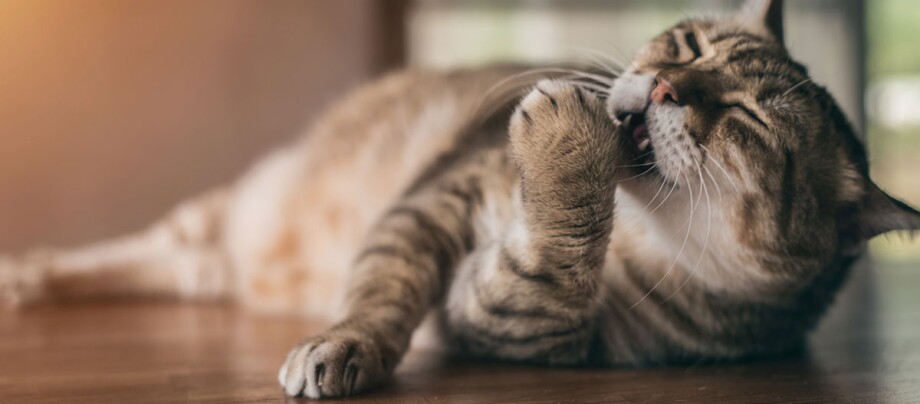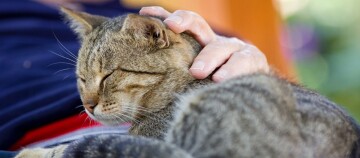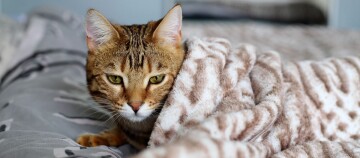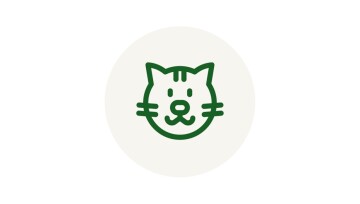Diabetes in Cats - Treatment, Reducing Weight and Change of Diet
13.10.2022 - Reading time: 5 minutes

Diabetes in humans is a widespread metabolic disease that manifests itself in hyperglycaemia of the blood. The cause is a disorder of the body's own insulin production: this hormone regulates the body's sugar balance. Cats can also get diabetes. However, feline diabetes differs in some respects from diabetes in humans.
What is diabetes in cats and what types of diabetes can they get?
Feline diabetes mellitus”, the medical name for the disease, is also caused in cats by a dysfunction of the pancreas, which regulates the release of the hormone insulin. As the body is unable to supply the organism with sugar and thus energy when there is too little insulin, the sugar passes into the urine and is discharged unused. As is the case with humans, there are different types of diabetes in cats: Type 2 diabetes is much more common, accounting for 80-95%. In this case, the insulin secretion is disturbed by an abnormal deposition of proteins or a toxic effect. The interesting thing is that this type of diabetes can occur temporarily as a side effect of another disease or drug therapy. Whereas in the rarer type 1 DM, the insulin-producing cells of the pancreas are directly damaged.
How do I recognise the symptoms of feline diabetes?
Symptoms of a cat’s disturbed energy balance include increased thirst and urge to urinate. The cat shows a great desire to eat, but becomes increasingly thin as the disease progresses. This can lead to a loss of muscle strength and neuronal sequelae as well as urinary tract infections. In contrast to diabetes in humans, however, feline diabetes has no effect on the eyes of the animal. Neutered and overweight male cats from about five years of age are particularly susceptible to developing feline diabetes. It is essential to treat the cat for diabetes: if no therapy is given, the disease will progress slowly and the outcome may be fatal. However, if the diabetes is discovered early enough and the right countermeasures are taken right away, there is a good chance of recovery.
What is the treatment for feline diabetes?
Diabetes in cats is diagnosed by measuring the fructosamine value – the long-term blood glucose level. The reliable and differential diagnosis of diabetes based on suitable measurements is fundamental: under no circumstances should insulin be administered to a non-diabetic cat on the basis of incorrect measurements! Nevertheless, it is difficult to diagnose diabetes in cats: as the blood glucose level of cats changes in stressful situations, which undoubtedly include a visit to the vet, blood samples taken in the practice may not be sufficiently conclusive for examination in the laboratory. Similarly, if the cat is also suffering from hyperthyroidism, which has a comparable effect on the blood count, this can also cause problems. Better results can be obtained by regularly checking the blood glucose levels in the animal’s familiar surroundings and in a calm atmosphere. These measurements are referred to as home monitoring.
During home monitoring, the cat’s blood glucose level is measured and recorded several times a day with a meter. A small drop of blood is taken from the animal’s ear for the measurement; a procedure that the cat will soon get used to if it is calm with its owner. The medication is adjusted on the basis of these values in consultation with the vet: As a rule, a sick cat must be injected with a carefully measured amount of insulin twice a day. There are various insulin preparations available for use in cats. The individual setting of the insulin dose is fundamental for the treatment of feline diabetes. An incorrect measurement can prove ineffective. Contrary to popular belief, there is no correlation between the cat’s weight and the amount of insulin required; nor are there any guideline values based on the breed or age of the animal. Every four-legged patient requires its own individual dose.
Measuring blood glucose and administering insulin will quickly become routine for both the animal and the owner. Nevertheless, it is important to avoid anything that could frighten or stress the animal, so that the values are not distorted and the animal does not develop an aversion to the treatment. The insulin is administered with a special insulin syringe. Pens, which are commonly used for human patients, are also available for feline diabetes. The injection should only be made in the flank area; this is roughly the area between the knee joint and the elbow of the cat. Never inject between the shoulder blades or into the neck, and ask the vet to show you how to grasp a fold of skin on the cat’s flank with your hand, where the injection is made, and how to draw the insulin into the syringes in the correct dosage. Once you master this, the procedure will become quick and easy.
Once the correct balance of nutrients in the food has been achieved together with insulin administration and the feline diabetes symptoms have subsided, the cat can live practically symptom-free. With type 2 diabetes, the pancreas can even recover completely with the correct feline diabetes treatment, reduction of excess weight and change of diet.
What should I look out for in a diabetic cat?
Factors conducive to diabetes in cats include obesity and persistent feeding errors:
Food that is too high in cereal and sugar components. Thus, to alleviate diabetes, focus on feeding and weight control.
Provide your house cat with high quality diabetes food for cats that is low in carbohydrates and high in protein. However, do not make any rapid food changes and have them monitored by your vet. If you need to inject your pet with insulin: Always administer it after eating.

You can find high-quality diabetic food for your cats in our Online Shop



